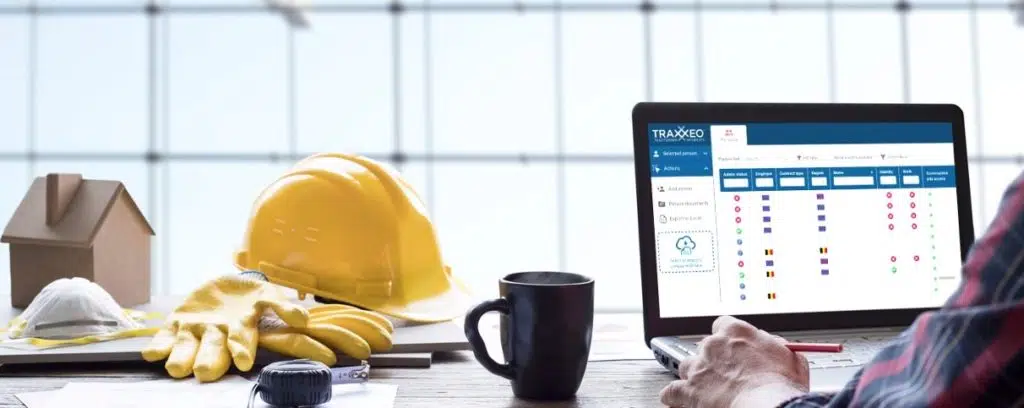Reliable Construction Document Management Solutions for every single Task
Reliable Construction Document Management Solutions for every single Task
Blog Article
Achieving Seamless Project Delivery: Architect's Comprehensive Method to Building Record Monitoring
One vital element often ignored is the management of construction files, which offers as the foundation of every job. As engineers browse the intricacies of control, execution, and style, a comprehensive strategy to document monitoring arises as a cornerstone for achieving smooth project distribution.
Value of Building And Construction File Administration
Efficient building record management plays an important role in making sure job success by promoting seamless interaction and company throughout the construction procedure. By preserving exact and updated building documents, engineers can efficiently connect with specialists, subcontractors, and various other stakeholders associated with the project. These files work as a recommendation factor for all parties, ensuring that everyone is working from the very same set of information and reducing the possibility of misconceptions or errors.
Furthermore, proper document administration can enhance job performance, lower expensive hold-ups, and inevitably lead to the effective conclusion of building and construction tasks. Engineers who focus on building and construction paper management set a strong foundation for job success and demonstrate a commitment to supplying premium outcomes.
Crucial Element for Reliable Paperwork

Developing standardized templates and methods makes sure consistency throughout all job files. Executing a robust file monitoring system that allows for version control, access constraints, and audit routes considerably enhances the organization and security of job paperwork. By incorporating these vital elements right into construction document management practices, designers can streamline processes, reduce mistakes, and eventually add to the successful shipment of tasks.
Making Use Of Innovation for Paper Organization
Leveraging sophisticated digital tools and software program systems is important in improving the company and accessibility of building and construction documentation. Architectural firms can simplify their paper monitoring processes by implementing specialized software made for the building sector. These devices provide features such as variation control, cloud storage, and collaborative editing capacities, allowing staff member to function on documents at the same time and guaranteeing every person has access to the most up-to-date details.
One key advantage of utilizing modern technology for paper organization is the ability to produce a centralized database for all project-related data. By storing papers in a protected digital setting, architects can quickly look, retrieve, and share details with stakeholders, lowering the risk of version conflicts or lost data. Additionally, progressed software application services usually include metadata tagging and indexing performances, permitting individuals to categorize papers efficiently and fetch them promptly when needed.
Joint Techniques With Job Teams
To maximize job outcomes, engineers have to welcome collaborative strategies when dealing with project groups to make sure seamless communication and coordination throughout the building process. Partnership with job groups is crucial for designers to effectively handle building tasks. construction document management. By fostering open communication and teamwork amongst all stakeholders, architects can simplify decision-making procedures, address potential problems proactively, and make sure websites that everybody is lined up with the task goals
Designers should develop clear lines of communication with designers, professionals, clients, and other vital team participants from the start of the project. Regular meetings, progress updates, and feedback sessions should be scheduled to keep everyone informed and engaged. Making use of collaborative task administration devices can additionally assist in real-time details sharing and record partnership, improving openness and efficiency.

Ideal Practices for Document Variation Control

Conclusion
In verdict, efficient building and construction record monitoring is critical for accomplishing smooth project delivery (construction document management). It is essential for designers to execute finest methods in document monitoring to efficiently navigate the complexities of building and construction jobs.
Reliable building file monitoring plays a vital duty in making sure task success by promoting smooth interaction and organization throughout the building and construction procedure. Furthermore, correct document monitoring can boost job effectiveness, minimize expensive hold-ups, and inevitably lead to the effective completion of building jobs.To enhance job end results, engineers need to embrace collaborative techniques when functioning with task groups to ensure smooth communication and sychronisation throughout the building procedure. Partnership with project teams is vital for architects to successfully take care of construction projects.In the world of collective building and construction task administration, keeping precise control over document versions stands as a crucial technique Get More Info for guaranteeing job stability and cohesion.
Report this page